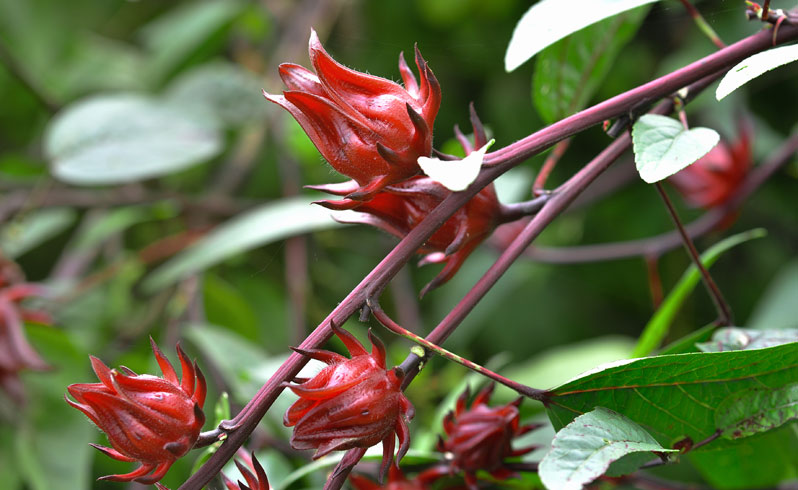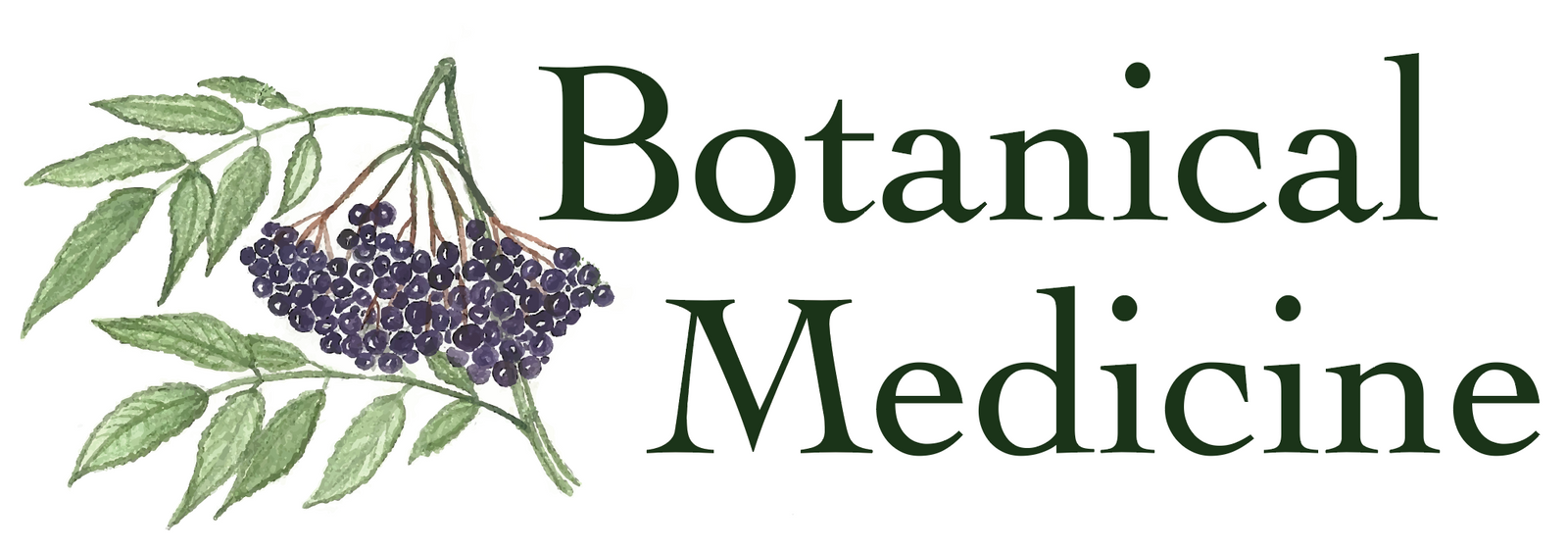
Understanding Metabolic Syndrome
Metabolic syndrome, also known as syndrome X, is not a single disease but a collection of risk factors that occur together. Individuals with metabolic syndrome are at a higher risk of experiencing a range of health complications, including cardiovascular disease, type 2 diabetes, non-alcoholic fatty liver disease and certain types of cancer. The incidence of metabolic syndrome has been increasing over the past few decades and is predicted to continue escalating in the coming years.
According to the National Heart, Lung, and Blood Institute (NHLBI), a person is diagnosed with metabolic syndrome if they have three or more of the following conditions:
- Abdominal Obesity: A waist circumference of 40 inches or more in men and 35 inches or more in women.
- High Triglyceride Levels: A triglyceride level of 150 milligrams per deciliter (mg/dL) of blood or higher.
- Low HDL Cholesterol Levels: Less than 40 mg/dL in men and less than 50 mg/dL in women.
- High Blood Pressure: Systolic blood pressure of ≥130 mm Hg or diastolic blood pressure ≥ 85 mm Hg.
- High Fasting Blood Sugar: A fasting blood glucose level of 100 mg/dL or higher.
Not all individuals with metabolic syndrome will meet each of the above criteria, and the severity of the condition can vary from person to person. Some individuals may only have a few of the components, while others may experience a more comprehensive set of metabolic disturbances.
Recognizing the presence of these symptoms is crucial for early detection and intervention, as addressing the underlying factors can help prevent the progression of metabolic syndrome and the associated health risks.
Understanding the Causes of Metabolic Syndrome

The development of metabolic syndrome is multifactorial, with a complex interplay of genetic, lifestyle, and environmental factors contributing to its onset. While the exact causes are not fully understood, researchers have identified several key factors that play a significant role in the emergence of this condition.
One of the primary drivers of metabolic syndrome is insulin resistance, ultimately resulting in high blood sugar levels and an increased risk of type 2 diabetes. Lifestyle factors, such as a sedentary lifestyle, poor dietary choices, and excess weight, are strongly linked to the development of insulin resistance.
Abdominal obesity, often referred to as "visceral fat," is another key component of metabolic syndrome. This pattern of fat distribution is particularly problematic as it is associated with increased inflammation and the release of inflammatory cytokines, which can further exacerbate insulin resistance and other metabolic disturbances.
Genetic predisposition also plays a significant role in the development of metabolic syndrome. Certain genetic variants can influence an individual's susceptibility to insulin resistance, obesity, and other metabolic abnormalities. Additionally, epigenetic factors, such as environmental exposures and lifestyle choices, can interact with genetic predispositions and contribute to the manifestation of metabolic syndrome.
Chronic stress and hormonal imbalances have also been identified as potential contributors to metabolic syndrome. Prolonged exposure to stress can lead to the overproduction of cortisol, a hormone that can disrupt glucose and lipid metabolism, as well as promote the accumulation of abdominal fat.
Herbal Interventions for Managing Metabolic Syndrome
The primary goals in treating metabolic syndrome are to improve sugar and fat metabolism while mitigating the long-term effects that elevated levels of glucose, fat, blood pressure and oxidative stress can have on the body.
While lifestyle changes like diet and exercise are fundamental to the management of metabolic syndrome, herbal interventions offer a complementary approach to managing and mitigating the effects of this presentation. There are a few herbs that really shine in this arena, as they have demonstrated the ability to address more than one of these targets simultaneously.

The plant extract berberine, found in Hydrastis canadensis(golden seal) and Mahonia spp.(Oregon grape), is noted for its blood sugar and lipid lowering activities. A meta-analysis of 18 randomized control trials demonstrated berberine's effectiveness in improving insulin resistance and cholesterol parameters, decreasing total cholesterol, triglycerides, and LDL cholesterol while helping to increase HDL cholesterol levels.[1] Findings from this analysis suggest that treatment duration of at least three months is necessary to achieve a therapeutic effect.
An additional small, randomized control trial compared berberine against metformin in 36 adults with newly diagnosed type II diabetes. Subjects were randomized to receive 500 mg of berberine or metformin three times daily for three months. The study showed similar hypoglycemic effects between berberine and metformin. Significant decreases in hemoglobin A1c (from 9.5%+/-0.5% to 7.5%+/-0.4%, P<.01), fasting blood glucose (from 10.6+/-0.9 mmol/L to 6.9+/-0.5 mmol/L, P<.01) and plasma triglycerides (from 1.13+/-0.13 to 0.89+/-0.03 mmol/L, P<.05) were observed in the berberine group.[2]
These effects are mediated through various mechanisms, including activation of AMPK, an enzyme that plays a crucial role in normalizing lipid, glucose, and energy balance leading to improvement of the metabolic dysregulation caused by metabolic syndrome.[3] Berberine also enhances insulin sensitivity by increasing insulin receptor expression, inducing GLUT4 translocation to the cell membrane, and promoting cellular glucose uptake.[4]
Often referred to as the "sugar destroyer," Gymnema sylvestre has also been studied for its anti-diabetic and lipid-lowering properties. Gymnemic acid, one of the active constituents, aids in decreasing body weight and inhibiting glucose absorption. Several compounds derived from Gymnema help prevent the buildup of triglycerides in the muscles and liver, and reduce the development of fatty liver and the accumulation of fatty acids in the bloodstream. [5] Gymnema has been shown to reduce blood sugar levels by promoting insulin secretion and an animal study suggests its ability to support regeneration of pancreatic islet cells.[6]

Momordica charantia (bitter melon) is a unique fruit that has been used in traditional medicine systems for its potential to regulate blood sugar levels and enhance insulin sensitivity. Its active compounds include charantin, vicine, and polypeptide-p, all of which contribute to its antidiabetic properties. Research has indicated that Momordica may mimic the effects of insulin, increase glucose uptake by cells, and improve insulin signaling pathways, making it a promising addition in the approach to treating individuals with metabolic syndrome. Additionally, the fruit's ability to enhance fat metabolism and suppress appetite can aid in weight loss, further helping to manage metabolic syndrome.[7,8]
GLP-1 agonists have gained much popularity with the introduction of the drug semaglutide. This pharmaceutical medication causes release of incretin hormones including GLP-1, which stimulate insulin secretion, delay gastric emptying (suppressing appetite) and inhibit glucagon production, resulting in improved blood sugar control and weight loss.
The inclusion of bitter herbs in the diet can support overall digestion, appetite suppression and enhanced insulin sensitivity. The combination of these effects can contribute to improved outcomes in the management of metabolic syndrome. Interestingly, the activation of bitter taste receptors is also associated with the secretion of various hormones, such as glucagon-like peptide-1 (GLP-1), ghrelin, cholecystokinin, and peptide YY, which are involved in controlling appetite and blood glucose levels.
One study demonstrated that bitters may elicit a similar effect through the stimulation of gut-expressed bitter taste receptors, which stimulate the secretion of GLP-1 in endocrine cells. This leads to increased insulin secretion and a reduction of blood glucose levels in diabetic mice.[9] Research also indicates that exposure to bitter substances can trigger the activation of bitter taste receptors, although the extent of this stimulation may be limited.[10]
A Japanese study looked at the effect of isohumulones, a bitter compound extracted from Humulus lupulus (hops) in 94 individuals with prediabetes. Participants of this double-blind study were given capsules containing 16 mg, 32 mg or 48 mg of isohumulones or placebo over a 12-week period. Results showed improvements in fasting blood glucose, HbA1c and decreased BMI in the intervention groups. No change was seen in the placebo group.[11] Additionally, strong bitters such as Gentiana lutea (gentian) prevented weight gain, fatty hepatocyte deposition and adipocyte size by decreasing the secretion of insulin and leptin in an obese mouse model.[12]

It is worth utilizing nutritive bitters such as Taraxacum officinale (dandelion) and Cichorium intybus(chicory), as these plants contribute the prebiotic starches necessary to support and maintain a healthy gut microbiome, which is often dysregulated and possibly contributory to insulin resistance, dyslipidemia and obesity.[13] Gut fermentation of prebiotics has also been shown to contribute to lower blood glucose, lower lipid levels and improved satiety levels in a small randomized, double-blind, parallel, placebo-controlled trial of 10 healthy adults.[14]

Cinnamomum zeylanicum/Cinnamomum verum (cinnamon) is a valuable herb frequently incorporated into protocols for managing blood glucose, making it an important addition to discussions on treating metabolic syndrome. Studies have demonstrated that cinnamon can enhance insulin activity and increase glucose uptake by cells, effectively controlling blood sugar fluctuations. Furthermore, cinnamon possesses anti-inflammatory and antioxidant properties, which can help mitigate the chronic inflammation often associated with metabolic syndrome.
Cinnamon extracts can activate the insulin-receptor-kinases and inhibit insulin-receptor-phosphatases to enhance insulin response.[15] Procyanidin type-A polymers also help to upregulate glucose uptake, increase glycogen synthesis and reduce glucose absorption in the small intestine. These type-A polymers are also credited with some of cinnamon’s antioxidant effects.[16,17]
A study from India investigated the effect of oral cinnamon consumption on subjects with metabolic syndrome. In this 16-week double-blind randomized control trial, 116 individuals with metabolic syndrome were randomized to receive capsules containing either three grams of cinnamon or placebo daily. Statistically significant improvements in fasting blood glucose, hemoglobin A1c, waist circumference and body mass index were observed in the cinnamon group vs placebo group. Factors associated with metabolic syndrome improved in the intervention group (34.5%) vs. the placebo group (5.2%).[18]
Cholesterol and lipid-lowering effects of cinnamon were shown in another study, which looked at the blood sugar and lipid lowering effects of cinnamon in individuals with type II diabetes. Doses of 1, 3, or 6 g per day were given to human subjects with diabetes and compared with placebo. The intervention continued for forty days, after which reductions in the levels of fasting serum glucose (18-29%), triglyceride (23-30%), LDL cholesterol (7-27%), and total cholesterol (12-26%) were seen across all three groups that received the cinnamon capsules. No significant changes were seen in the placebo groups.[19]
Hibiscus sabdariffa (roselle, hibiscus) is a vibrant and flavorful herb that is well known for its ability to improve blood pressure. Less known are its potential benefits in managing other aspects of metabolic syndrome, including lipid and blood sugar regulation. A randomized control trial looked at the effect of 100 mg of hibiscus extract powder (HSEP) in subjects with or without metabolic syndrome. Participants in both the metabolic syndrome and healthy (control) groups were randomized to the following treatment groups: preventive treatment (diet), HSEP treatment or diet combined with HSEP treatment. Results showed that patients treated with HSEP had significantly reduced glucose and total cholesterol levels, as well as increased HDL-c levels. Additionally, a triglyceride-lowering effect was observed in group of patients with metabolic syndrome that were treated with HSEP plus diet and in individuals without metabolic syndrome treated with HSEP. A significant effect was not seen in the triglyceride levels of the participants with metabolic syndrome that received HSEP alone.[20]
Cortisol and Metabolic Syndrome
In addressing the multiple factors contributing to metabolic syndrome, it is crucial to consider the role of chronic stress. Elevated cortisol levels, often due to chronic stress, can lead to insulin resistance, abdominal obesity, hypertension, and dyslipidemia.

Application of stress-reduction techniques such as mind-body interventions, breathing exercises or vagal nerve stimulation can be paired with adaptogenic and nervine herbs such as Withania somnifera (ashwagandha), Rhodiola rosea(golden root), Ocimum sanctum (holy basil), Melissa officinalis (lemon balm) or Magnolia officinalis (magnolia) to help modulate the stress response. Read more about herbs to manage chronic stress.
In conclusion, the use of herbal interventions presents a promising adjunct approach to managing metabolic syndrome (Syndrome X), a complex condition characterized by a cluster of risk factors that significantly increase the risk of cardiovascular disease and type 2 diabetes. Herbs such as berberine, Gymnema sylvestre, Momordica charantia, and cinnamon have shown potential in improving insulin sensitivity, regulating blood glucose levels, and addressing lipid abnormalities. Additionally, the inclusion of bitter herbs and their ability to stimulate hormone secretion involved in appetite and glucose control can further enhance treatment outcomes. Furthermore, addressing chronic stress and elevated cortisol levels with adaptogens and nervines can further support the holistic approach to managing the effects of metabolic syndrome. Given the rising prevalence of metabolic syndrome, integrating these herbal interventions with conventional lifestyle modifications offers a comprehensive strategy to mitigate the associated health risks and improve patient outcomes.
Meet Our Contributor:
 Meghan Zech is a Naturopathic Doctor based in Seattle, WA. She is board certified in Naturopathic Oncology and is a AHG Registered Herbalist. Her clinical practice emphasizes botanical medicine and nutrition, with a particular focus on integrative oncology, chronic health conditions and digestive concerns. She is particularly passionate about working with patients in the cancer survivorship setting as this growing population faces unique medical needs, which are often poorly understood in the primary care setting. She can be found at www.sanapacifica.com
Meghan Zech is a Naturopathic Doctor based in Seattle, WA. She is board certified in Naturopathic Oncology and is a AHG Registered Herbalist. Her clinical practice emphasizes botanical medicine and nutrition, with a particular focus on integrative oncology, chronic health conditions and digestive concerns. She is particularly passionate about working with patients in the cancer survivorship setting as this growing population faces unique medical needs, which are often poorly understood in the primary care setting. She can be found at www.sanapacifica.com
REFERENCES
- Ye Y, Liu X, Wu N, Han Y, Wang J, Yu Y and Chen Q (2021) Efficacy and Safety of Berberine Alone for Several Metabolic Disorders: A Systematic Review and Meta-Analysis of Randomized Clinical Trials. Front. Pharmacol. 12:653887. doi: 10.3389/fphar.2021.653887. Published: 26 April 2021.
- Yin J, Xing H, Ye J. Efficacy of berberine in patients with type 2 diabetes mellitus. Metabolism. 2008 May;57(5):712-7. doi: 10.1016/j.metabol.2008.01.013. PMID: 18442638; PMCID: PMC2410097.
- Srivastava, R. A. K., Pinkosky, S. L., Filippov, S., Hanselman, J. C., Cramer, C. T., and Newton, R. S. (2012). AMP-activated Protein Kinase: an Emerging Drug Target to Regulate Imbalances in Lipid and Carbohydrate Metabolism to Treat Cardio-Metabolic Diseases. J. Lipid Res. 53 (12), 2490–2514. doi:10.1194/jlr.R025882
- Bagade A., Tumbigeremutt V., Pallavi G. Cardiovascular Effects of Berberine: A Review of the Literature. J. Restor. Med. 2017;6:37–45. doi: 10.14200/jrm.2017.6.0100.
- Pothuraju R, Sharma RK, Chagalamarri J, Jangra S, Kumar Kavadi P. A systematic review of Gymnema sylvestre in obesity and diabetes management. J Sci Food Agric. 2014 Mar 30;94(5):834-40. doi: 10.1002/jsfa.6458. Epub 2013 Nov 19. PMID: 24166097.
- Kannan P, Raghunathan M, Mohan T, Palanivelu S, Periandavan K. Gymnemic Acid Ameliorates Pancreatic β-Cell Dysfunction by Modulating Pdx1 Expression: A Possible Strategy for β-Cell Regeneration. Tissue Eng Regen Med. 2022 Jun;19(3):603-616. doi: 10.1007/s13770-022-00435-7. Epub 2022 Feb 25. PMID: 35212973; PMCID: PMC9130387.
- Alam MA, Uddin R, Subhan N, Rahman MM, Jain P, Reza HM. Beneficial role of bitter melon supplementation in obesity and related complications in metabolic syndrome. J Lipids. 2015;2015:496169. doi: 10.1155/2015/496169. Epub 2015 Jan 12. PMID: 25650336; PMCID: PMC4306384.
- Richter E, Geetha T, Burnett D, Broderick TL, Babu JR. The Effects of Momordica charantia on Type 2 Diabetes Mellitus and Alzheimer's Disease. Int J Mol Sci. 2023 Feb 28;24(5):4643. doi: 10.3390/ijms24054643. PMID: 36902074; PMCID: PMC10002567.
- Kim, Ki-Suk, Josephine M. Egan, and Hyeung-Jin Jang. "Denatonium induces secretion of glucagon-like peptide-1 through activation of bitter taste receptor pathways." Diabetologia 57 (2014): 2117-2125.
- Behrens M, Meyerhof W. Bitter taste receptors and human bitter taste perception. Cell Mol Life Sci. 2006 Jul;63(13):1501-9. doi: 10.1007/s00018-006-6113-8. PMID: 16732425; PMCID: PMC11136386.
- Obara K, Mizutani M, Hitomi Y, Yajima H, Kondo K. Isohumulones, the bitter component of beer, improve hyperglycemia and decrease body fat in Japanese subjects with prediabetes. Clin Nutr. 2009 Jun;28(3):278-84. doi: 10.1016/j.clnu.2009.03.012. Epub 2009 Apr 23. PMID: 19395131.
- Park E, Lee CG, Kim J, Yeo S, Kim JA, Choi CW, Jeong SY. Antiobesity Effects of Gentiana lutea Extract on 3T3-L1 Preadipocytes and a High-Fat Diet-Induced Mouse Model. Molecules. 2020 May 25;25(10):2453. doi: 10.3390/molecules25102453. PMID: 32466183; PMCID: PMC7288051.
- Wang PX, Deng XR, Zhang CH, Yuan HJ. Gut microbiota and metabolic syndrome. Chin Med J (Engl). 2020 Apr 5;133(7):808-816. doi: 10.1097/CM9.0000000000000696. PMID: 32106124; PMCID: PMC7147654.
- Cani PD, Lecourt E, Dewulf EM, Sohet FM, Pachikian BD, Naslain D, De Backer F, Neyrinck AM, Delzenne NM. Gut microbiota fermentation of prebiotics increases satietogenic and incretin gut peptide production with consequences for appetite sensation and glucose response after a meal. Am J Clin Nutr. 2009 Nov;90(5):1236-43. doi: 10.3945/ajcn.2009.28095. Epub 2009 Sep 23. PMID: 19776140.
- Sangal, A. "Role of cinnamon as beneficial antidiabetic food adjunct: a review." (2011): 440-450.
- Adisakwattana S, Lerdsuwankij O, Poputtachai U, Minipun A, Suparpprom C. Inhibitory activity of cinnamon bark species and their combination effect with acarbose against intestinal α-glucosidase and pancreatic α-amylase. Plant Foods Hum Nutr. 2011 Jun;66(2):143-8. doi: 10.1007/s11130-011-0226-4. PMID: 21538147.
- Anderson RA, Broadhurst CL, Polansky MM, Schmidt WF, Khan A, Flanagan VP, et al. Isolation and characterization of polyphenol type-A polymers from cinnamon with insulin-like biological activity. J Agric Food Chem. 2004;52:65–70.
- Gupta Jain, S., Puri, S., Misra, A. et al. Effect of oral cinnamon intervention on metabolic profile and body composition of Asian Indians with metabolic syndrome: a randomized double -blind control trial. Lipids Health Dis 16, 113 (2017). https://doi.org/10.1186/s12944-017-0504-8
- Khan A, Safdar M, Ali Khan MM, Khattak KN, Anderson RA. Cinnamon improves glucose and lipids of people with type 2 diabetes. Diabetes Care. 2003 Dec;26(12):3215-8. doi: 10.2337/diacare.26.12.3215. PMID: 14633804.
- Gurrola-Díaz CM, García-López PM, Sánchez-Enríquez S, Troyo-Sanromán R, Andrade-González I, Gómez-Leyva JF. Effects of Hibiscus sabdariffa extract powder and preventive treatment (diet) on the lipid profiles of patients with metabolic syndrome (MeSy). Phytomedicine. 2010 Jun;17(7):500-5. doi: 10.1016/j.phymed.2009.10.014. Epub 2009 Dec 3. PMID: 19962289.




